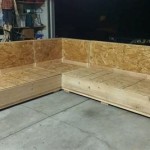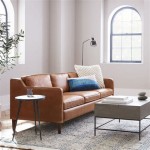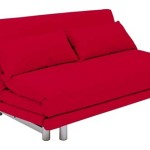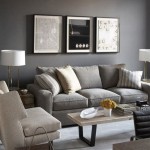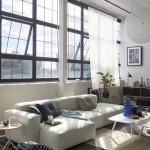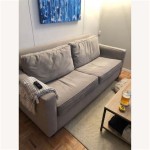The Enduring Appeal of the Backless Sofa Bench: Form, Function, and Versatility
The backless sofa bench, a seating element characterized by its elongated form and absence of a backrest, has experienced a resurgence in popularity within interior design. Its minimalist silhouette and adaptability to various spatial contexts contribute to its appeal. Understanding the nuances of its design, functionality, and potential applications is crucial for effectively incorporating this piece into diverse environments.
Unlike traditional sofas and armchairs, the backless sofa bench fosters an open and less confined sense of space. Its design encourages interaction and facilitates unobstructed sightlines. Its straightforward construction often translates to a lighter visual footprint, making it a particularly suitable option for smaller rooms or areas where maintaining a sense of airiness is paramount.
The design evolution of the backless sofa bench has seen diverse iterations, from simple, unadorned wooden structures to more elaborate upholstered pieces with intricate detailing. The selection of materials plays a significant role in determining the aesthetic and functional properties of the bench. Wood, metal, and upholstered surfaces each offer distinct characteristics in terms of durability, comfort, and visual appeal.
Versatility in Placement and Application
The versatility of the backless sofa bench is one of its most compelling attributes. Its adaptability allows it to seamlessly integrate into various rooms and serve multiple purposes. This adaptability stems from its inherently neutral design, which facilitates blending with diverse interior styles and decors.
In living rooms, a backless sofa bench can serve as a supplementary seating option, placed against a wall or positioned centrally within the space to define a conversation area. The absence of a backrest encourages movement and allows individuals to engage with the room from multiple perspectives. When placed against a wall, throw pillows can be added to provide additional back support and enhance comfort.
Within entryways and hallways, a backless sofa bench provides a functional and aesthetically pleasing seating solution for removing shoes, waiting, or simply pausing. It can also serve as a decorative element, adorned with cushions or decorative objects to enhance the overall ambiance of the space. Its streamline design helps prevent the area from feeling cluttered or overwhelmed.
In bedrooms, a backless sofa bench can be placed at the foot of the bed, adding a touch of elegance and providing a practical space for placing clothes or accessories. Its slim profile ensures that it does not obstruct movement within the room, while its visual appeal complements the overall aesthetic of the bedroom.
Dining areas can also benefit from the inclusion of a backless sofa bench. When paired with a dining table, it offers a more relaxed and informal seating option compared to traditional dining chairs. This arrangement is particularly well-suited for smaller dining spaces where maximizing seating capacity is a priority.
Outdoor spaces, such as patios and balconies, can also incorporate backless sofa benches constructed from weather-resistant materials. These benches provide comfortable and stylish seating for enjoying outdoor activities or simply relaxing in the open air. Materials such as teak, acacia, or powder-coated aluminum are commonly used for outdoor benches due to their durability and resistance to the elements.
Material Considerations and Design Aesthetics
The choice of materials significantly impacts the aesthetic and functional properties of the backless sofa bench. Different materials offer varying levels of durability, comfort, and visual appeal, making it essential to carefully consider the specific requirements of the space and the desired aesthetic when selecting a bench.
Wood is a classic and versatile material choice for backless sofa benches. It offers a natural warmth and beauty that can complement a wide range of interior styles. Hardwoods, such as oak, maple, and walnut, are particularly durable and resistant to wear and tear. Softwoods, such as pine and cedar, are more affordable options but may require additional maintenance to prevent damage.
Metal frames, typically constructed from steel or aluminum, offer a sleek and modern aesthetic. Metal is also highly durable and resistant to corrosion, making it a suitable option for both indoor and outdoor use. Powder coating can be applied to metal frames to provide additional protection and enhance their visual appeal.
Upholstery can significantly enhance the comfort and aesthetic appeal of a backless sofa bench. A wide variety of fabrics, including linen, cotton, velvet, and leather, can be used to upholster the bench. The choice of fabric will depend on the desired level of comfort, durability, and visual style. Performance fabrics, which are stain-resistant and easy to clean, are a practical choice for high-traffic areas.
The design aesthetic of the backless sofa bench can range from minimalist and contemporary to traditional and ornate. A minimalist bench will typically feature clean lines, simple shapes, and a neutral color palette. A traditional bench may incorporate more elaborate detailing, such as carved legs or decorative embellishments. The overall design of the bench should complement the existing decor of the space and reflect the personal style of the homeowner.
The size and proportions of the backless sofa bench should also be carefully considered. The bench should be appropriately sized for the space in which it will be placed and should not obstruct movement or overwhelm the room. The height of the bench should also be comfortable for sitting and should be proportional to the height of any adjacent furniture.
Practical Advantages and Considerations
Beyond its aesthetic appeal, the backless sofa bench offers several practical advantages. Its simple design often translates to easier maintenance and cleaning compared to more complex seating options. The absence of a backrest also allows for greater flexibility in terms of placement and arrangement within a room.
Cleaning a backless sofa bench is generally straightforward. Wood and metal surfaces can be easily wiped down with a damp cloth. Upholstered benches may require more specialized cleaning methods, such as vacuuming or spot cleaning with a mild detergent. Regular maintenance can help to prolong the lifespan of the bench and keep it looking its best.
The open design of the backless sofa bench can also contribute to improved airflow and ventilation within a room. This is particularly beneficial in smaller spaces where maintaining adequate ventilation is essential. The absence of a backrest allows air to circulate more freely, preventing the accumulation of stagnant air.
From a safety perspective, a backless sofa bench can be a safer option for young children and elderly individuals compared to seating options with high or protruding backrests. The absence of a backrest reduces the risk of falls and injuries, particularly in areas where children are playing or individuals with mobility issues are present.
When selecting a backless sofa bench, it is essential to consider the weight capacity of the bench and ensure that it is adequate for the intended use. The bench should be constructed from sturdy materials and designed to withstand the weight of multiple individuals. Regularly inspect the bench for any signs of wear or damage and make any necessary repairs to ensure its continued safety and stability.
The backless sofa bench represents a versatile and aesthetically pleasing seating solution suitable for a wide range of interior and exterior spaces. Its minimalist design, adaptability, and practical advantages make it a valuable addition to any home or commercial environment.

Use Backless Sofa For Less Space Tips To Decorate A Small Living Room Beautifully Bench Furniture Layout Classic

Backless Sofa Home Furnishings In Faridabad

Icon Of Creative Modern Backless Couch Design Upholstered Daybed

Oguta Backless Sofa Skarabrand

Credofy Rectangular Wooden Backless Sofa For Home Size Contemporary

Backless Couch The Recamier Airawat Handicraft Sofa Styles

Mysore Backless Sofa Burma Teak

82 3 In Rectangular Rolled Arm Fabric Upholstered Straight Bench Sofa Stool For Bedroom Living Hallway Beige Gm H 206 The Home Depot

Kafelonia Backless Sectional Sofa Bench Westminster Teak

Bust Of Creative Modern Backless Couch Design Sofa

